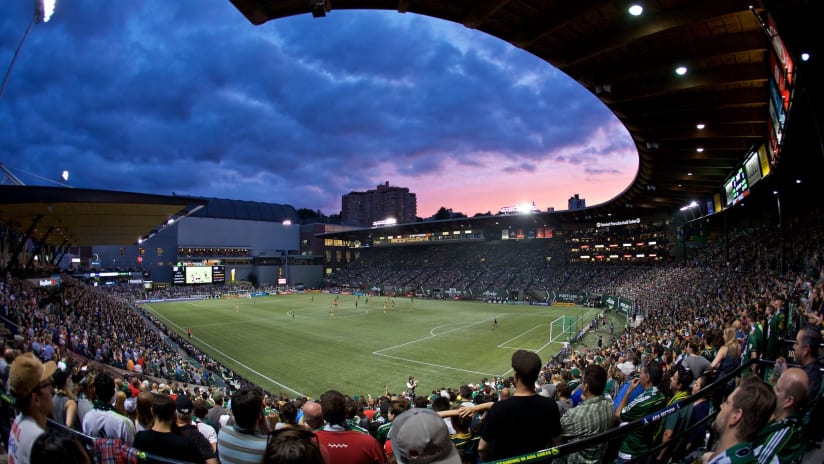The Portland Timbers' announcement Wednesday of the acquisition of a total of $750,000 in General Allocation Money and $300,000 in Targeted Allocation Money (as well as a foreign roster spot and near $600,000 in potential incentive-based additional Targeted Allocation Money compensation) from Atlanta United in exchange for Darlington Nagbe and Gbenga Arokoyo became one of the largest cash-related transactions in MLS history.
The Timbers parted ways with one of their original MLS players, however they receive a tremendous windfall that can help fortify the team for seasons to come.
But how does this money work within the league and how do teams use it? All MLS teams adhere to a salary budget structure that the league sets. In 2017, that budget number was $3,845,000. While not a hard cap per se, there are rules with which players fit within the budget, or don’t count towards the budget—for example, Homegrown Players—and there are exceptions to go over that budget with Designated Players. How teams allocate their players and fit within that structure can be adjusted and finessed using the mechanisms of General Allocation Money and Targeted Allocation Money.
General Allocation Money or GAM, for short, is one of the more familiar terms to MLS fans. It is money that is made available to a club from the league to be used in addition to its salary budget. Every MLS club receives an annual allotment of GAM from the league and more is given to teams who don’t make the playoffs, who do make the CONCACAF Champions League, and also through numerous other mechanisms all in a way to help maintain competitive parity between teams. It can be used to “buy down” a player’s salary cap hit, re-sign a player and a host of other uses. It is a tradeable asset and, beginning last year at the 2017 MLS SuperDraft, is now an item where the amount is made public in the event of trades.
- MLSsoccer.com Glossary:General Allocation Money
Targeted Allocation Money (TAM) is a more recent league development and similar to GAM, but has a more specialized use for MLS teams with players. In short, TAM allows teams to sign or re-sign a player at a higher rate than the league maximum player budget hit but who are not set as a Designated Player. Portland players Diego Chara and Liam Ridgewell were both re-signed with TAM. Victor Vazquez of Toronto FC and Columbus Crew SC's Ola Kamara and Wil Trapp are all TAM players as well.
- MLSsoccer.com Glossary:Targeted Allocation Money
Just last week, the league announced changes in TAM in that each club will receive $1.2 million for the both the 2018 and 2019 seasons and, if they choose, teams can pull forward their amounts from 2019 to use immediately. Moreover, clubs are also now allowed to spend up to $2.8 million in discretionary TAM funds provided by the team themselves. Clubs now have more flexibility to choose how much money they want to invest in their roster.
With the GAM and TAM Portland received from Atlanta, the Timbers will have a good deal of flexibility to deepen and adjust their roster within the salary budget. Additionally, the team could receive up to an additional $600,000 in incentive-based TAM compensation from Atlanta pending Nagbe’s performance. Meaning if he hits certain benchmarks while playing for Atlanta, then Portland will receive TAM in return. The Timbers also would receive a portion of any possible international transfer money on the player as well.
The end result is that Portland now has a tremendous resource of GAM and TAM with which to strengthen their team roster be it to re-sign core players or to accelerate new player acquisitions from both within and outside of the league.












